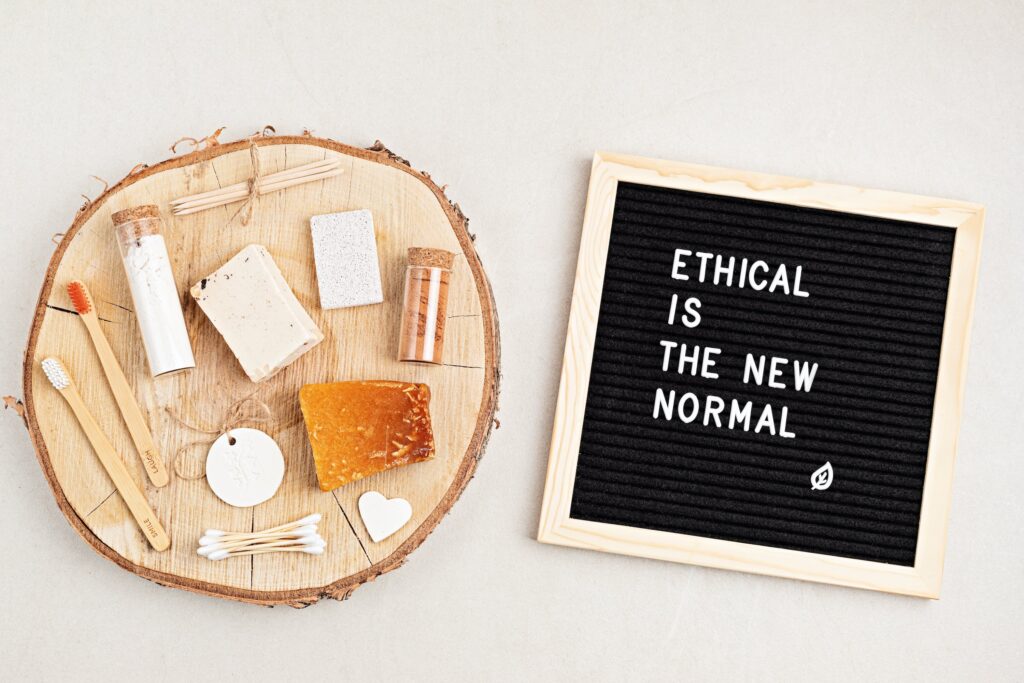The beauty industry has long been associated with excess — from plastic-heavy packaging to questionable ingredients and hidden labor practices. But a new wave of ethical beauty brands is rewriting the story. These companies prioritize sustainability, responsibility, and transparency, giving consumers the power to enjoy beauty products without compromising the health of the planet or the dignity of people.
Ethical beauty is more than a marketing claim — it is a blueprint for reshaping how the industry sources, produces, and sells. When millions of us choose better, those ripples grow into industry-wide waves of change.
Sustainability in Ethical Beauty
Sustainability lies at the heart of ethical beauty. Brands leading the way rethink every stage of the product lifecycle — from the soil ingredients are grown in, to the energy powering manufacturing, to packaging at the end of use.
Key sustainable practices include:
- Natural and organic ingredients grown without toxic pesticides or chemical fertilizers.
- Eco-friendly manufacturing that conserves energy and water.
- Sustainable packaging made from glass, aluminum, compostable materials, or refill systems.
These choices reduce waste, limit pollution, and prevent harmful chemicals from entering our bodies and waterways. By investing in sustainability, ethical brands show that beauty and environmental stewardship can coexist.
Responsibility in Ethical Beauty
Beyond environmental commitments, responsibility means ensuring people across the supply chain are treated with dignity. Ethical brands often embrace:
- Fair trade sourcing that pays farmers and producers fairly.
- Safe working conditions and respect for workers’ rights.
- Community involvement, where profits fund education, farming support, or local empowerment projects.
When consumers choose responsibly sourced products, they are not just buying cosmetics — they are casting a vote for equity and justice in global trade.
Transparency in Ethical Beauty
Transparency builds the trust that has been missing from much of the beauty industry. Ethical brands pull back the curtain on ingredients, sourcing, and certifications so consumers can make informed choices.
This can include:
- Clear ingredient lists with no hidden synthetics or toxins.
- Disclosure of sourcing and manufacturing locations.
- Third-party certifications such as USDA Organic, Fair Trade, or Leaping Bunny.
Transparency also holds companies accountable — consumers can trace where their purchases come from, reducing the risk of greenwashing and ensuring their money supports genuine sustainability.
Why Ethical Beauty Matters
Ethical beauty is not just a trend — it is a cultural reset. It reduces reliance on harmful chemicals, curbs waste, supports communities, and restores consumer trust. More importantly, it challenges a profit-first model by proving that brands can thrive while putting the planet and people first.
For consumers, the impact is personal: healthier skin from toxin-free products, cleaner homes free from chemical residue, and the reassurance that your purchase supports fairness and responsibility. For society, the impact is systemic: stronger supply chains, reduced exploitation, and measurable climate benefits.
Final Thoughts
The beauty industry reflects our relationship with consumption — fast, disposable, and often disconnected from its true cost. Ethical beauty brands invite us to rewire that relationship, showing that sustainability, responsibility, and transparency can be the foundation of every purchase.
By supporting these brands, we take part in a movement where small shifts in our daily routines ripple outward into systemic change. Ethical beauty is not just about looking good — it’s about living in a way that feels right for the planet, for people, and for the future.









Reader Interactions